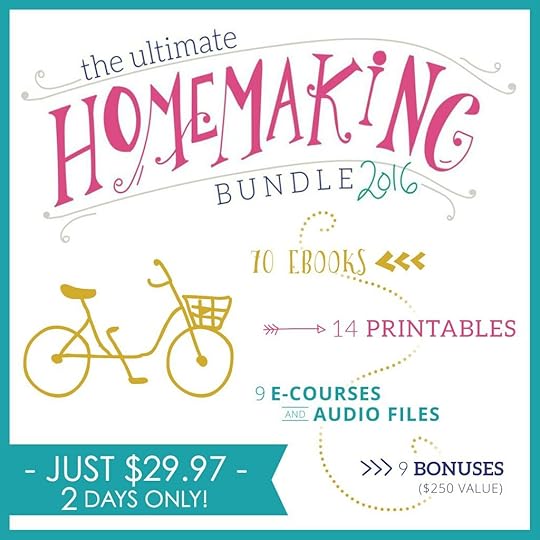Ruth Soukup's Blog, page 60
June 20, 2016
How to Best Use Your Storage Space

Do you ever feel like your house is simply stuffed to the gills? Or find yourself frequently looking for some new way of organizing your closets, wondering how to best use your storage space? Do you ever feel like you are always organizing but never actually getting organized? Do you ever wonder how some people seem to make staying organized look so effortless, even with much less space to work with?
Believe it or not, most of us, our storage problem is NOT an organizational problem. It’s not that we don’t have enough closet space, or that we haven’t figured out the right system. It’s not that we don’t have the right boxes or bins or baskets to put everything in.
Our problem is too much stuff.
The reality is that stuff can quickly take over your space and leave you with literally nowhere to go. I say all of this because, while there’s a need to organize and come up with great storage solutions and efficiently use your storage space, there’s also a tendency to abuse the space. As they say, with great power (or space, in this case) comes great responsibility. If you have the storage space, there’s no reason to overstuff it—and there’s nothing that says just because you have a closet, cupboard, pantry or storeroom, you need to fill it to the brim.
Anyone who’s owned an older home knows about tiny closets and a lack of storage. Why is that? Because, back then, people didn’t have as much stuff! They only owned what they could afford. They used things up and made the most of what they owned. There were no Walmarts or Amazon.com to provide an endless supply of cheap things.
Thus, the first step in becoming more organized and maximizing your space is getting rid of the things you don’t need and the things which no longer serve your family. If you don’t love something, if it’s broken, if it doesn’t fit, or if you don’t use it, then get rid of it! Clear it out of your space! Get unstuffed!
You might not be ready for a tiny home (or even have the organization of that Ikea catalog), but you can definitely gain more control over the space you do have. You can find great ways to organize your space and prioritize in a way that will help you quickly and efficiently find anything you want.

Step 1: Ruthlessly Purge
Before you even start to organize, you need to start to purge. By that I mean, you need to start getting rid of all that stuff! Pull everything out of your closet or storage room and give it a long, hard look. Are there items you could repackage more efficiently? Are there things you could give away, sell or donate to charity?
I find that most storage areas, whether they’re in the attic, basement, garage or simply a closet, end up containing a mixture of things we use seasonally (sports equipment, cold or warm weather gear, suitcases, Christmas decorations, home décor and repair items), plus things we just can’t let go of (a VCR, craft projects we’ve never finished, baby clothes and toys, and things that, while useful, are no longer useful to us).
It makes sense to keep seasonal items, emergency food storage, and travel items…but what about those other things? Are they really worth the space they take up?
Give yourself permission to let go of anything you haven’t used in the past year, despite who gave it to you, and despite how much it cost. If there are holiday decorations you didn’t use last year, let them go. If there are skis you haven’t used since you were in college, send them to a sports recycler. Do you still have the right cords for the VCR? Do you actually plan to ever watch a VHS tape again? Really?
One of the other things I commonly hear: “But it might be worth something someday…” While we’ve all watched Antiques Roadshow and seen that amazing moment when someone’s baseball card or coin collection turns out to be a goldmine, most of the time it’s not worth the storage space it’s taking up. IF you think you might have something valuable, check eBay or go to an appraiser and have the item assessed. If you aren’t willing to do it or don’t think it’s worth the effort, it’s time to let it go.

Step 2: Assess Your Space
What kind of storage space do you have? If it’s a closet or basement shelving, look at the height and the width of the space. Is there a way to make it more efficient by adding additional shelving, hooks or bins?
A friend of mine built beautiful shelves into her garage to store things—only to realize the items she wanted to store (pots, garden tools, sports equipment, and yard equipment) were much too big, bulky and heavy to fit on her lovely book-sized garage shelves. No one wants to lift heavy items down from above their head and most people don’t store books and knickknacks in their garage. Keep large items low and accessible with tall shelves that can accommodate bins and heft.
Sometimes the best storage solution is simply open space. If you can contain your Christmas decorations into two or three large stacking bins, why not just stack them neatly and label them?

Step 3: Invest in Uniform Storage Solutions
If you’ve truly purged your items and pared down to the bare necessities, then this is one case where investing in some attractive bins and uniform storage solutions can be worth it. Storage bins protect items from water damage, bugs and pests that would love to make their nests in your Christmas stocking. (Believe me, it’ll ruin your festive spirit come November!)
If you need to store things like craft supplies, opt for smaller bins or baskets that are clear or easily labeled, so you can quickly assess what’s inside. If you have to display them in a bookcase or outside the closest, go for attractive bins that match your home décor. Be very selective about what you keep inside opaque bins because they can end up becoming a catch-all for clutter and a dumping ground for wayward projects and items you forget about.
If you’re looking at storage in the garage or basement, Rubbermaid trashcans can also be a great way to store strangely shaped items like balls, baseball bats, hockey sticks, rakes, hoes and shovels. Keep like items together, and again, keep only the necessities.

Step 4: Clean Your Space
Before you put everything back together, give the space a clean sweep. When you’ve moved out everything, it can be a great time to give the floor a coat of paint or even put down an old rug or mat. Wipe down any shelves and give them a fresh coat of paint, if needed. Check the nooks and crannies to ensure there aren’t cracks or signs of rodents. Plug up any holes or areas where pests can sneak in.
Whether you’re working in your attic, basement, garage, or just in a closet, check for water damage, and for signs of mildew or mold. Storage areas can be notorious for hiding foundational and integrity concerns. There are paints with antimicrobial properties you can purchase to keep the problem under control.
Finish by putting down shelf paper or paper toweling on each shelf to keep things neat and tidy. Pick something attractive and cheery to brighten the space. When you have a beautiful storage area, you’re less likely to dump things off or to want to clutter it up with more “stuff.”

Step 5: Put Your Space Back Together
Now that your space is ready, put the items in each bin. Carefully wrap breakable holiday items, pottery and other fragile things, so they can be safely stored. Keep like items together and limit yourself to keeping just the items you know you’ll use within the next year.
Travel storage (like suitcases, garment bags and extra bags) can be stored together. Keep puzzles and games only if you plan to play with them again. If you donate games to Goodwill or charity, write “complete game” on the box, so people will know the pieces are accounted for. Be sure to tape the box shut.
Once you’ve pared down to just the items you’ll use, putting them back together should be relatively easy. Put craft items in one bin, camping items in another. Label each storage container according to what is stored within or buy multiple bin colors and use a color system to quickly assess where something should go.
Place all items onto their shelves and adjust as needed. Be sure you’re making the best use of space by stacking items where they fit and don’t leave too much empty space surrounding anything.
Once you’ve organized your storage space, commit to keeping it intact. Make a rule that whenever you or a family member uses something from the space, they must return it to its rightful home. Periodically assess the bins and seasonally purge any items that are broken, worn out, or no longer fit the style or age of your family.
Getting unstuffed is a lifelong project. Don’t let your home become a storage unit. Let go of the items that no longer serve you or make you happy. Commit to fighting the flow and keeping your home organized and tidy.

Pin It
The post How to Best Use Your Storage Space appeared first on Living Well Spending Less®.
June 17, 2016
How to Negotiate a Raise

Whether you work from home part-time or go to an office forty hours a week, chances are, you’ll probably reach a point in your life where you’ll want more pay for your work.
If you’re anything like me, the prospect of walking up to someone and saying you deserve more money probably seems a little daunting most of the time. After all It just isn’t a comfortable topic for most of us. Asking for more money seems frightening. We‘re taught to be satisfied with what we have. We’re often concerned about the needs of our families, our spouse, and those around us—and how we can meet those needs—but yet, we feel selfish trying to meet our own needs monetarily. (Even though it would ultimately benefit our family.)
This can be one of the biggest challenges for women. We see it in the wage gap between women and men in the workforce. In her book, Women Don’t Ask, author Linda Babcock and Sara Laschever explore why this phenomenon has become a societal norm, and why, as women, we often feel we’re unworthy or undeserving of equal pay. She suggests, as women, we have emotional strengths and needs, and we can tap into those to be even better negotiators.
This can be a challenge for two-income households as well as for single moms. As moms, we often have to consider things like maternity leave, availability of childcare, and non-monetary benefits like a flexible schedule. This can mean no matter how hard we work, we feel like we’re still not in a position to ask for more compensation.
Yet, we’re often struggling to pay our debts. We’re struggling to build up an emergency fund and achieve financial peace. We’re coupon clipping, DIYing and sale-shopping, and yet we’re afraid to do the one thing that might actually grant us more financial freedom: asking for a raise.
No matter your position or line of work, there are simple ways you can prepare yourself to ask and (hopefully) receive the answer you want when it comes to additional compensation.

Make Sure You Deserve It
As a boss, I know that good employees are hard to find, and I will do almost anything to make sure that my rockstar employees–the ones who “bring it” every single day–are well taken care of. That said, there is nothing that bothers me more than when an employee asks for a pay raise before they’ve proved their worth. When I worked in retail and property management, I would frequently have employees ask for a raise after just a few weeks. More than once, their justification for deserving the raise was that they had actually shown up. I wish I was kidding.
So here’s a little tip–just showing up and putting in the minimum effort required for a job that you are already getting paid to do does not qualify you for a raise. Anyone can do that, and workers who will do just that are a dime a dozen.
Thus, before you even begin to think about asking for a raise, be brutally honest with yourself. Are you truly putting in the maximum amount of effort every single day? Do you help out you co-workers, come to work with a positive, get-it-done attitude, and actively look for ways to do your job better, to become more efficient, and more productive? Are you interested in the success of the company as a whole? Have you worked for the company for more than six months and demonstrated a consistently excellent performance? If the answer to any of these questions is no then you might want to hold off until you can answer yes to each and every one.
Do Your Research
First of all, explore what others in your field are making and what seems to be a fair compensation for your city, state and position. Sites like Glassdoor.com can help you gain a handle on what others in your shoes are making. Before you get bummed because you hear “the average salary for x job in the U.S. is $x/year,” take into consideration experience, expertise, region and location. (For example, nurses in a rural area vs. nurses in a large city may be compensated differently.)
There are, of course, other things to research as well. Are you living within your means? Check the real estate market and cost of living in your area to ensure you’re on target with those around you. You can’t base salary negotiations simply on the fact YOU need more money. Do a reality check of your budget and the state of your finances to make sure you aren’t aiming for the stars, while living on the moon.
You should also assess the competitiveness of the market for your industry. If you’re in a highly competitive market, there may be others who can do what you do for the same price. Be realistic about your goals as well. You might need $10,000 more per year to pay your bills, but most raises are somewhere between 2-3%, on average.
List Your Accomplishments
What have you achieved over your course of employment? Don’t simply look at the things above and beyond your job description, but include any and every success. Look at those times when you’ve proven yourself to be truly indispensable.
Consider keeping a “kudos” folder. Whenever a client, co-worker, or supervisor sends you a complimentary email or tells you they’re happy with something you’ve done, save a copy so that you have an ongoing list of accomplishments and milestones.
When you think of adding to your resume or if you’re jumping back in the workforce after a break, think of accomplishments outside the box. It’s okay to include part-time gigs and work from home. Also add in volunteer opportunities, church activities, and your positions in the Girl Scouts and on the PTO. After all, those jobs still require organizational skills, community engagement, communication, and project management. (…and you thought you were just selling cookies!)

Be Prepared
Before you go into a negotiation, do plenty of preparation. This means you should have a history of your salary and any raises you’ve had in the past. While you don’t want to bombard your employer or client with paperwork, you do want to have everything handy to answer any questions.
You also want to prepare emotionally and mentally. It’s difficult to ask for a raise, but rehearsing the conversation with a spouse, friend or mentor will make it feel more natural. Have them enact different scenarios with you, including your “worst fear” scenario (even if it’s over the top: “How DARE you ask?? You’re fired!”). Once you’ve run through it a few times and even laughed about your fears, you’ll feel more confident about your approach.
Set up an appointment so you aren’t trying to corner your boss at an inopportune time, or suddenly springing “the ask” on a client. Choose a time when you won’t be interrupted, if possible. You don’t have to give all of the details about the meeting, but it’s professional if you at least let him or her know you’d like to get together to discuss your role, your performance and your future.
Making the Ask
Rather than walking in and demanding a specific number, it’s appropriate to offer a range (and to expect the response to fall in the low-end of that range). If you’re hoping for $35,000, for example, you may want to ask for between $33,000 and $40,000. Be sure the low end is something you can still live with.
When you meet with your boss, go in confidently. Don’t fidget, stammer or look down. Walk in, shake hands, and make eye contact. Thank your boss for meeting with you, and let them know what you’re hoping to discuss. Segue into the conversation by discussing your role, your strengths and your performance.
When you ask, you shouldn’t make the request in a way that suggests it’s about what you need or what others are getting paid. Your financial stability isn’t your boss’ problem, nor is your inability to afford a new car, vacation or even your rent. It’s also inappropriate to point out what your coworkers make, and then ask your boss to give you a raise to match their salary. Your raise should be about your performance and your value to the company or organization.
The one caveat is when you’re negotiating a higher rate with clients. It can be appropriate to refer to industry norms and what fellow consultants and those in your role are making. Talk about the indispensable nature of your services and what you uniquely bring to their table. In this case, it’s appropriate to compare your rate with others doing the same job.

If the Answer is No
You may want to throw a fit, shut down, cry, or run out of the office. Do none of those things. Instead, take a deep breath and thank your boss or client for their consideration. This can be where a woman’s sensitivity can be a real strength. Calmly ask your boss if they can outline some action items you can take to get you to the salary you’re aiming for, and then be willing to listen.
You may need to undertake more professional development. There may be issues with your performance. (Are you frequently late? Do you take long breaks or have you missed a lot of time or deadlines?) It may simply be a tough time for the company. Let your boss know you would really like to revisit the conversation in six months, when you’ve taken the steps they’ve outlined.
If a raise isn’t in the cards due to financial constraints of the company, it can be a great time to ask for other benefits—a title change, extra days off, a more flexible schedule, or the ability to telecommute a few days per week. Most bosses who are happy with your performance will want to comply to keep you with the company for the long haul.
In most cases, if you’ve done your research, you’ve set your expectations, and you’ve aimed accordingly, you won’t be left with a cold no. On the off chance you are, then it’s time to consider your options. If this is a make-or-break conversation for you, then it may be time to send out some feelers and look at other offers.
Keep in mind, it’s generally easier to ask for a higher salary when you’re offered a position, than it is further down the road, so use the same tactics to negotiate in your new offer. But, while you’re on the hunt, continue to do your best at your current position. You never know when a coworker or boss will turn into a great reference in the future. There’s certainly no reason to burn bridges.
Most jobs genuinely want happy employees. If employees are satisfied it can mean better performance for the company as a whole. Employers recognize this and work to keep their workers as satisfied as possible.
As women, providing for our families and helping to meet their needs is vital. Whether we’re the sole breadwinner or part of a team, it can add pressure to know a raise might be the difference between braces for your daughter or no summer camp for your son. Do your best, be confident, and realize you deserve to be compensated fairly and equally for the work you do.

The post How to Negotiate a Raise appeared first on Living Well Spending Less®.
June 15, 2016
Easy Salsa Chicken

It’s no secret that we LOVE quick & easy freezer meals around here, especially ones that use budget-friendly chicken! Believe it or not, this tender, juicy, flavor-packed Easy Salsa Chicken might just be our easiest recipe yet. It’s got just 5 basic ingredients, whips up in minutes, then goes straight from the freezer to the crockpot to the table, all while tasting like you spent hours slaving away in the kitchen!
To make it as part of a freezer cooking day, just split the sauce & chicken into multiple bags, then throw it right into the freezer–no cooking required!
You can use any type of chicken but my family much prefers the boneless, skinless chicken thighs, which are a darker, juicier meat and also tend to be cheaper than the boneless skinless breasts.

Here is what you need:
4 pounds boneless skinless chicken breasts or thighs
2 32oz. jars of chunky salsa
2 tablespoons softened butter
1 tsp crushed red pepper flakes
salt & pepper to taste
1 can black beans (optional; cooking day only)
cooked rice (optional; cooking day only)
fajita shells (optional; cooking day only)
1 8oz.bag shredded cheddar cheese (optional: for cooking day only)

Step 1: Whisk together salsa, butter, and red pepper flakes. (Note: If using chicken thighs omit the butter.)

Step 2: Cut chicken breasts in half and then divide into 2 gallon size freezer bags (be sure to label bags first!) Then divide salsa mixture into bags over chicken; freeze until needed.

Step 3: On cooking day, place frozen chicken directly into crock pot. Cook on high 4-5 hours, or on low 5-6 hours.

Step 4: Once cooked; shred chicken and place back into crock pot.

Step 5: Optional! If desired, rinse black beans and then add to crock pot.

Step 6: Serve in fajita shells, over rice and with cheese or sour cream if desired.
**Please note: If using chicken breasts you will need to adjust the cooking time.
Print This!
Recipe: Easy Salsa Chicken
Summary: This super simple chicken recipe cooks in the crockpot for a delicious meal with little to no cleanup!
Ingredients
4 pounds boneless skinless chicken breasts or thighs
2 32oz. jars of chunky salsa
2 tablespoons softened butter
1 tsp crushed red pepper flakes
salt & pepper
1 can black beans (optional; cooking day only)
cooked rice (optional: for cooking day only)
fajita shells (optional; cooking day only)
1 8oz.bag shredded cheddar cheese (optional: for cooking day only)
Instructions
Whisk together salsa, butter, and red pepper flakes.(Note: If using chicken thighs omit the butter.)
Cut chicken breasts in half and then divide into 2 gallon size freezer bags (be sure to label bags first!) Then divide salsa mixture into bags over chicken; freeze until needed.
On cooking day, place frozen chicken directly into crockpot. Cook on high 4-5 hours, or on low 5-6 hours.
Once cooked shred chicken and place back into crockpot.
Optional! If desired, rinse black beans and then add to crock pot.
Serve in fajita shells, over rice and with cheese or sour cream if desired.
Preparation time: 5-7 minutes
Cooking time: 4-5 hours on high or 5-6 hours on low in crockpot.
Number of servings (yield): 4

Pin It
The post Easy Salsa Chicken appeared first on Living Well Spending Less®.
June 13, 2016
How to Fit In More Fitness

Ugh. Exercise.
Am I the only one who completely dreads the thought of working up a sweat? And because I dislike it so much, it is easy to convince myself that I am just too busy to worry about working out. Fitness is for people who don’t have anything better to do, right?
But the sad reality is that as I get older and the big 4-0 looms ever closer, I am noticing more and more that it is just not as easy to manage my weight as it used to be. Furthermore, when I get stressed out, I tend to be more susceptible to illness. And I don’t think I’m alone here! The reality is that stress damages the immune system, causing us to feel somewhere between crummy and awful.
But the antidote to stress? Movement. Getting physical exercise and fitting in extra fitness when you can keeps you mentally and physically fit.
Plus, even if you don’t think exercise makes a huge difference in your weight loss endeavors, sometimes just the effort of getting in some physical activity can help you get into “fitness mode.” You’re more likely to make healthier choices and stay in the mindset if you’re already “being good.”
So, what’s a busy mom to do? How do we fit a little more fitness into our busy lives? The thought of finding a gym class, finding a sitter for two hours, getting dressed in gym clothes, driving there and back…it’s laughable for most of us. It’s just not realistic.
I read a book a few months ago that completely changed my perspective on exercise. It was called No Sweat by Michele Segar, and it talked about the science of motivation when it comes to exercise. There were two lessons in the book that changed everything for me.
First, Segar explained that if we want to make exercise a part of our life, there has to be an immediate reward. Thus, if it feels good and we are enjoying ourselves, do it, and if it doesn’t feel good, stop and do something else.
Second–and this lesson was huge–EVERYTHING COUNTS.
In my own life, these two lessons were completely transformative! You see, I had it in my head that in order for a workout to “count,” it had to be painful and I had to work up a sweat. Thus, I would try to force myself to run in the morning, but then end up dreading it and somehow always find a reason to not go. (Usually–I have too much work to do!)
So how can we fit in more fitness to our already busy lives? Try these tips:

Get Efficient
Figure out what exercise will give you the most bang for your fitness buck. For example, while an hour-long yoga class across town might sound heavenly, a 30-minute sweat session with a DVD might be more realistic and burn more calories to boot. HIIT workouts (High Intensity Interval Training) are quite popular and it’s easy to fit in an interval or two when you have a small window of time. Check out HIIT Interval Training Timer or another HIIT app to help guide you.
Bonus: studies have now shown that just a few minutes of intense exercise can outweigh or equal longer periods of moderate exercise. So don’t be afraid to fit in ten minutes here and there throughout the day!
Do What You Love
Some of us are born to run, while others prefer to dance the night away. Find an exercise you love to do and it won’t feel like drudgery. If there’s something you were interested in as a child—like softball—sign up for a community league. If you enjoy the solace of running or walking, then make it your go-to exercise. Adventurers might enjoy hiking, kayaking or even just yardwork. As long as you do it with intention and a mindful approach, you can make almost any “work” or “play” beneficial to your fitness.
After reading Segar’s book, I realized that while I don’t at all enjoy running, I do enjoy walking, especially when I can listen to audiobooks along the way. Now my morning walk is my absolutely favorite part of the day, and I almost never miss it. In fact, I usually can’t wait to get out of bed so I can get going!

Make It Easy
Here’s the deal: Nike, Reebok, Spaulding…all these exercise clothing and equipment companies would like you to believe you need an entire wardrobe of active wear, a different pair of shoes for each activity, and cutting edge equipment tailored to your body type.
In reality, this just complicates things and gives us another excuse to put it off. Lace up your good ol’ sneakers and go. Throw on a t-shirt and your husband’s basketball shorts and hit the pavement, treadmill or gym. Yes, it can be motivating to have cute workout gear, but most of it’s not necessary. If there’s something you’d like to try, consider renting equipment until you find out if the sport floats your boat.
Go to the Park
Not only is the playground great for your kids, but it can be great for adults as well. Climb on the monkey bars, walk up and down the equipment, and push your kiddos in the swings. Do some squats as you lift your kids onto the toys and get interactive. Going to the park should be about playing, not about sitting on a bench and watching. Not only will your kids love it, but you just might have fun, too!

Find a Friend
Enlist an accountability buddy to help you stay on track with your fitness goals. It’s even better if that friend also likes to work out with you or is willing to sign up for a class or two. It’s much harder to bail when you know your girlfriend is depending on you to be there. If you prefer to work out alone, consider signing up for an occasional race or event that you can do together to mark your progress.
Schedule It
Just like any goal, making your fitness time-bound helps you stay on track. If you don’t put your activities on your calendar and take control of your schedule, you’ll end up shoving them off and onto the bottom of your to-do list. Just like an important meeting or something you’d do for your spouse or kids, put your exercise right there on your schedule and stick to it! If something comes up, move it to another time, but don’t skip it.

Keep it Interesting
One reason people quit making fitness a priority? Boredom. If you’re doing the same thing over and over, running the same route and doing the same activities, it doesn’t feel like a challenge. Instead, mix things up! Try a different route (use MapMyRun for ideas), set goals, and try to push yourself a little farther, faster or harder. Add some more weight to your lifting, more time to your planking, or new moves to your yoga routine.
Walk the Kids to School
Mornings can be a challenge, but if your kids walk to school, try walking with them. If you want to avoid the chaos of the drop-off line of cars, park a few buildings over or down the street and get a little walk in with your children before they go to class. You won’t feel as frustrated as you would when you’re waiting behind another mom on her cell phone, plus, you’ll have a moment to connect with your kids before they start their day. Chances are, it won’t even add much extra time to your routine, since you’d already spend it in the carpool lane.

Pace During the Game
If you’re a soccer mom (or a dance, swimming, or piano mom), try to fit in some steps and exercise during lessons or games. Rather than sitting on Pinterest in the parking lot or watching from the sidelines, walk around the field or building and get in some extra movement. You’ll be close enough to cheer and be supportive, but you’ll still fit in your exercise!
Use a Fitness Tracker
Fitness trackers are all the rage these days and for good reason: they help us measure our progress and goals. If you have a step goal each day, it can be immensely satisfying to look at your tracker and see you’ve hit your target. Fitness trackers can be as simple as an analogue pedometer or as complex as the latest smartwatch. Some track your heartrate, pace, distance, sleep, and calories burned, while others simply count your steps. Either way, find one that works for you and get tracking your way to your goals!
I have been using the Jawbone UP for about 3 months now, and I absolutely love it! It has made me so much more aware of how little I move each day, and that subtle reminder encourages me to be more intentional about getting extra steps in wherever I can. (Note–the Amazon reviews on this particular tracker are pretty mixed, but I have had nothing but a good experience!)

Try an App
There are a slew of fitness apps available, from Charity Miles (where corporate sponsors give a few cents to charity each time you work out) to MyFitnessPal to Fit Radio (which creates kick-butt music playlists for your workout). If you’re looking for something really different, there’s Zombies, Run!, an app that puts you in the middle of a “zombie attack” story. There’s also Pact, which allows you to wager money on whether or not you’ll keep your fitness goals (pretty darned motivating), and there’s 7-Minute Workout from Johnson & Johnson, which provides great, short workouts you can fit in any time.

Say Yes to Play
The next time you hear, “Mommy, will you play with me?”—say yes. Get down on the floor and play. Run around, chase your kids, play tag and hide-and-go-seek, go for a bike ride, or climb up to the treehouse. If your kids want to go to the trampoline park or the rock climbing wall, give it a whirl! Try the batting cages or mini-golf on family night and don’t stand still in between turns. Play can be one of the simplest and most fun ways to fit in exercise, and your children will be absolutely delighted to have mommy join in on the fun!
“Run” Errands
The next time you have a few errands to run around town, park the car and literally RUN the errands (or power walk). Plan your route so you can hit all of your destinations (the bank, the pharmacy, the library) and then walk it out. Forgoing the turmoil of finding parking and driving around in traffic can actually save you time and stress. Enjoy the sites and sounds of your town as you run your various errands and cross items off of your to-do list.

Walk with Friends
Next time a friend wants to meet for coffee or lunch, ask them if you can meet at a park and walk around. Even walking through the mall or a museum can be a great way to fit in some more steps. You’ll probably feel more productive and engaged in your conversation than you would simply sitting around at California Pizza Kitchen again. After you’ve done some walking, you’re both more likely to make good choices when it comes to food and drinks. After all, you don’t want to undo your healthy choices!
Go for a Bike Ride
Have fun with your family and go for a bike ride or a hike along some trails. Yes, it can feel a tad dorky when you’re all in helmets, riding along a path, but it’s a great way to instill the value of fitness and health in our children by showing them their parents make exercise and movement a priority. Plus, there’s something really fun about riding a bike. It takes you back to your childhood—feeling the wind on your face and the sun at your back—it hardly feels like exercise at all.

Exercise Between Commercials
When you’re watching your favorite show, commit to exercising in between commercials. If you have a DVR or if you’re watching on Netflix, make it a goal to do five minutes of exercise in between each episode. You can even play a game where you mix up what you do according to what the characters on the show are doing. For example, every time Law & Order transitions to the courtroom or each time a contestant is eliminated on Dancing with the Stars, you have to do 25 crunches or ten reps on each arm with your free weights.
Work out at Work
Redecorating your office is no small task, but if you plan on upgrading your desk, consider switching to a standing or treadmill desk, as opposed to sitting. If the option of a new desk isn’t in the cards, make it a goal to get up every hour and walk for five minutes, even if it’s just to the water cooler. Similarly, if you need to get up to talk to a coworker, walk to their office, rather than calling or IMing. If you work from home, stand up every time you take a phone call. Spend your lunch hour taking a walk around the block and try to focus on ways to add movement throughout your workday.

Don’t Go for Convenience
The next time you’re at the grocery store, go for a basket rather than a cart (if at all possible). Park away from the entrance and walk a little farther. Try to keep up a good pace while you shop and focus on deliberate steps and lifting as you go.
Similarly, when you’re cleaning your house, push the furniture out of the way, stretch and climb, and make multiple trips up and down the stairs. Rather than carrying all your groceries in at once, go back and forth to the car several times to get in some more steps.
Fitness is a lifelong goal and focus. It’s important that all of us make our bodies and health a priority. Part of living well is being healthy enough to enjoy it. Fit in fitness wherever you can and make long-term fitness your goal!

Pin It
The post How to Fit In More Fitness appeared first on Living Well Spending Less®.
June 10, 2016
8 Ways to Give Yourself an e-Break

We all know the importance of downtime, whether it involves giving yourself time to recharge your batteries, get organized, or simply stop and smell the roses. But how many of us think of downtime as time without our beloved electronics?
Unfortunately, in our jam-packed, hustle-bustle, on-the-go lives, it can be really hard to disconnect.
Twenty years ago, social media didn’t exist—the Internet was just budding, most of us were yet to own a cell phone (though some of us had beepers or “car phones” for emergencies), and home computers were much too big to lug around. I specifically remember being amazed by the idea of email in my late teens. You can connect with anyone for free! It only takes a few minutes to send over dial-up! AOL is so cool! Listen: it says, “You’ve got mail!”
Back then, when you stepped away from the computer or left the house, you were disconnected from electronics and fully connected to what was going on around you. People had to leave messages and wait for answers. News came in papers. If you needed to find something, you used a map or a phonebook. You probably spent time at the library researching in reference books.
Today, things have changed. Information is instant and connections are constant. We’re comfortable, used to, and dependent on instantly reaching our kids, spouse and loved ones via text message. We share all kinds of minutiae about our lives. We can see what our cousin had for dinner on Instagram. We receive news instantly, as it happens. Our phones are loaded with thousands of photos and we have relationships and contact with people we probably wouldn’t have stayed in touch with twenty years ago.
There are a number of studies out there on the concept of FOMO (fear of missing out) and how social media, electronics, and our constant connectedness aren’t always a positive thing. Anyone who’s been irked by someone else’s Facebook post and wondered, “Why am I even still friends with someone I shared a hall with in college?” knows the struggle is real.
Just the other day, I sat down to write a thank you note and I literally couldn’t remember how to spell a few simple words. I ended up looking them up on my phone to double check. Our dependence on autocorrect and spellcheck, plus the ability to ask Siri or Google anything and receive an immediate response has limited our ability to think on our feet.
In so many ways, technology is a blessing, but it can also be a curse. We let our electronics do our thinking for us. We feel constantly tied and obligated to stay connected with others, and our personal relationships suffer because of it. Our lives become cluttered with technology.
How many of us have tried to hold a conversation with someone who can’t put down his or her phone? It feels insulting and frustrating, but we’ve all been guilty at some point. We’re so busy connecting, sharing, documenting and researching online we forget to engage IRL (in real life).
Steps to Disconnect
Now, before you panic (and FOMO kicks in), I’m not suggesting you completely throw out your phone and swear off the Internet. Clearly, as a blogger, the Internet is my livelihood. By connecting and sharing online with others I’ve been able to support my family and my life has been blessed beyond measure because of it.
However, especially as a blogger and someone who works online, the need to occasionally step away from the computer and put down my phone is even stronger. Because so much of Living Well Spending Less comes from my own life and activities, it’s pretty important I remain engaged and busy living THAT life, rather than just writing about it all the time. When I spend too much time writing and hanging out on the Internet, I actually run out of things to talk about. (Yes, even me.)
The same holds true for everyone though: all work and no play makes us dull. Ask any tax preparer during tax season, mom of a newborn, or teacher during back to school season—when one thing becomes your singular focus, you start to run out of interesting conversation. That’s why it’s so important we step back and disconnect on occasion: so we can feel rejuvenated, stimulated and ready to get back into work.
It can be hard to pry the phone out of our hands and really disconnect. What if you miss something important? What if there’s an emergency? We become overly vigilant, watching for a message to come through, so we can instantly respond. So how do we take a tech break?

1. Stop Multitasking!
Go for a walk without your phone, even if you fear missing out on an Instagram-worthy moment. Play outside with your kids for half an hour and leave your phone in the house. If you want to listen to music, try playing a CD or the radio, or even break out your iPod—just put your phone out of reach.
When you’re working on a project on the computer, try closing your browser windows and just focusing on the task at hand. Don’t leave your Facebook, your email and the news up in different tabs just so you can volley back and forth.
The really amazing thing? When you focus on just one task, you’ll actually enjoy what you’re doing more. You’ll remember the moment (even without the photographic proof) and dinner will taste just as delicious. You’ll feel present in the moment, your productivity will go up, and you’ll do everything better. So try giving up multitasking (or at least get smarter about it).
2. Don’t Check Your Email First
I’m just as guilty as anyone. Yes, too often I check my email first thing in the morning. Sometimes before I even get out of bed, I check it on my phone or tablet. What happens? I start responding, then we start going back and forth…and suddenly an hour of my morning is gone.
Ask yourself, have you ever received an emergency email in the middle of the night? Has there ever been something so urgent in your inbox you’ve had to leap out of bed and address it right away—work or personal? Typically, if there were a real emergency or urgent situation, you would get an actual phone call. When doctors are “on call” for emergencies, the hospital doesn’t usually email them and wait for a response. No, they pick up the phone and call. Similarly, you can rest assured your email won’t be used for lesser “emergencies” either.
Instead of checking first thing in the morning (or first thing when you get to work), tackle your toughest task first and get it out of the way. Then, no matter what happens for the rest of the day, you’ve already accomplished something great.
Keep your inbox organized and quickly discard junk. Try using filters or setting up automatic responders, which can clear some of the traffic. If you still struggle with organizing email, try Sortd for Gmail—a “skin” for Gmail (like a plugin) that helps turn your inbox into a workflow. You can also try Boomerang, which allows you to easily schedule email reminders so you can deal with them when you’re ready.

3. Set a Limit
Literally, set a timer and don’t pick up your phone for the set amount of time. Yes, this can be challenging at first.
Think of all the things you can do, no technology needed: exercise, read a story to your kids (from an actual book rather than on your Kindle), play a game, do a puzzle, walk your dog, make cookies, go for a drive, enjoy a romantic dinner with your spouse—the list is huge! Now, challenge yourself to do one of these activities mindfully and without the use of technology.
When you have a task you need to tackle and you’d like to do it technology free, never underestimate the power of an old-school timer. Try the timer on your stove or a simple digital timer—set it and go. Sometimes the challenge of completing a task during a set amount of time can keep you even more deeply focused and productive.
Lastly, block out time on your calendar and add technology-free time to your to-do list or planner. Just as with your workouts, scheduling time to disconnect will keep you accountable and ensure you hold to keeping your distractions at bay!
4. Block Distractions
If you find you just can’t stay away from social media or you can’t bear to ignore the glow of your phone, try switching your phone into airplane mode during the time you’d like to disengage.
There are a myriad of apps you can download to help you beat distractions as well: Freedom, SelfControl, Cold Turkey, and for writers, Writer’s Block. These apps block websites, set parameters for access to social media sites, and allow you to avoid distractions and too many “surfing” breaks.
Another method is to use a different ringtone for a few key callers and switch everyone else to vibrate or silence. (This is helpful for moms of teens who are worried about missing an emergency call.) You can also set your phone to ring only during certain hours, unless a caller calls twice in a row.
If you find you’re addicted to certain apps, hide them or even delete them from your phone. I find, if I have to download an app all over again or go to my computer to pull it up, I’ll often skip it. But if I have it right on hand, the temptation to click becomes much greater.

5. Make Rules and Stick to Them!
One of the key takeaways from all these parameters and ideas is to simply try applying self-control and self-discipline. This means, if you don’t want technology to rule your life, if you truly need a break or feel it’s making you distracted, sad or stressed, then you have to commit to making the change.
Set some rules for yourself, such as not checking your email first thing in the morning, only working on the task at hand, or not accessing technology after 8:00 pm—and religiously stick to your rules. If you go on vacation and still find yourself responding to work emails or looking at Facebook, you’re telling yourself limits don’t matter and you’re setting yourself up for failure.
The strange thing is, after setting up a few rules and following them, I’ve found I’m not missing out on a thing! When I check my phone after an “e-break” or when I finally pull up my Facebook feed, I’m often amazed at just how little I’ve missed out on. What’s more, I’m always grateful for the time I spent with my kids and my husband rather than surfing away on my phone or laptop.
6. Unfriend
This one can be quite a challenge. Some of us have hundreds of Facebook “friends” that we may never even talk to in real life. Yes, it can be nice to reconnect with your bestie from elementary school or keep in touch with your cousin in Arizona, but oftentimes our social media connections ring hollow.
Part of it is deciding what you really want out of social media. If you’re hoping to cultivate close friendships and a personal sense of community, then feel no guilt when it comes to blocking people from your newsfeed, ignoring friend requests, or even unfriending people.
For many of us whose personal and professional lives overlap, social media can be a bit more of a challenge. You can create groups in Facebook for those friends you specifically want to stay in contact with. Also, if your professional life is very online-specific (ahem), you can also consider setting up a personal page for yourself, close friends and family, then a separate professional page for your business and blog.
Setting up these social media designations and guidelines might seem like a lot of work or extra effort, but in reality, it will help you maintain relationships with those who really matter to you. You’ll see them more online and enjoy more quality interactions. Plus, you’ll save yourself from those unnecessary headaches you get after reading racist tirades or angry political posts from people you met once or knew ten years ago.

7. Go Old School
The next time you want to make something from a recipe, consider printing it out, getting it from a cookbook, or jotting down a few notes. Read a paper book or magazine. Get out your old camera and take photos with film. Use a pattern to sew something. Get “old school” about it!
My children love board games, charades, and playing pretend—none of which require any technology what-so-ever. We enjoy family bike rides and spending time outside gardening and digging around in the dirt. Think of all the things you did as a child, and even things your parents did. In the days before videogames, Netflix, iPads and digital technology, people still found ways to stay entertained. (Some would argue they were even MORE entertained.)
Go to a farmer’s market, listen to jazz in the park or enjoy an outdoor concert, go to a festival, or even to a carnival or fair. Take your kids swimming, snowshoeing, skiing, or on a hike. Eat dinner outside. Without the bells and whistles of technology, you can create plenty of memories from exciting activities. You may be amazed at the all the little things you’ll notice about the world around you.
8. Take a Technology Sabbath
If you’re ready to take the plunge, try going on a technology Sabbath. Take a day a week and unplug. If that sounds too extreme, commit to an afternoon or tech-free morning on a weekend. Get your spouse and your kids on board. This means no television, no cell phones, no e-readers. Put all the digital “stuff” away and do something together.
There’s been a movement over the last few years, as more and more people yearn to take a technology break. There are even adult summer camps based around the idea of turning off technology and getting outdoors to commune with nature and other people, face-to-face and in person.
As we’ve moved into the digital era, we’ve gained so much, but we’ve also lost a few things, including the value we place on interpersonal relationships, conversation, and living in the moment. As you unstuff your life and declutter, clear your mind and take a technology break. It’s time to unplug and tune in!
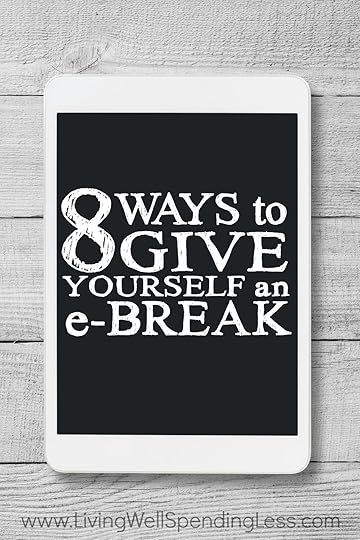
Pin It
The post 8 Ways to Give Yourself an e-Break appeared first on Living Well Spending Less®.
June 8, 2016
Easy Rhubarb Muffins

This is a guest post from Sammi of Grounded & Surrounded
For years, every time I spotted rhubarb in the store or at the farmers market, it would elicit unpleasant memories from my childhood. My aversion to rhubarb was replaced with intrigue when a friend served me a delicious rhubarb recipe that I actually enjoyed. I quickly realized I needed to reconsider my distaste for this simple vegetable.
If you are perplexed or wary of rhubarb, I have created this simple recipe with you in mind. The small dice of the rhubarb decreases the need for extra sugar and also spreads the tart rhubarb flavor throughout the batter so it’s not too overwhelming. I have been serving this muffin recipe to my family for over a year and they love it so much we actually decided to start growing our own rhubarb. I am happy to know that my kids’ childhood memories of rhubarb will be the polar opposite of mine.
Gone are the days of dry and tasteless gluten-free baked goods. The secret ingredient is sour cream. It adds just the right amount of richness and a nice tender crumb to these mildly sweet muffins. Pair that with the tartness of the rhubarb and your taste buds will be singing.
Rhubarb is to spring what zucchini is to summer, overabundant and under appreciated. Frugal shoppers will want to check out Ruth’s post Fresh Produce 101 for tips. Buy it in bulk in the spring at your local market and freeze to use in recipes year-round. Once you try this recipe, you will want to have rhubarb on hand all year long so you can make it whenever the craving strikes.

Here is what you need:
Batter
1/2 cup sour cream
1/2 cup applesauce
4 Tbsp coconut oil, melted
1 tsp vanilla extract
2 eggs
2 cups gluten-free flour blend
3/4 cup granulated sugar
2 tsp baking powder
1/2 tsp baking soda
1/2 tsp cinnamon
1/8 tsp sea salt
2 cups fresh rhubarb, diced into ¼- ½ inch pieces
Topping
2 Tbsp sugar
½ tsp cinnamon

Step 1: Preheat your oven to 400F. In a large bowl, whisk together the sour cream, applesauce, melted coconut oil, vanilla extract, and eggs until smooth.

Step 2: Next, add in the flour, sugar, baking powder, baking soda, cinnamon, and salt. Mix the batter until just combined.

Step 3: Then, gently stir in the diced rhubarb.

Step 4: Divide the batter among the 18 muffin cups using a cookie dough scoop. Due to the thickness of the batter, you may need to settle the batter into the cups with the back of the scoop.

Step 5: In a small dish, mix your topping ingredients and sprinkle ¼ tsp of the cinnamon sugar mixture on top of each muffin. Bake the muffins at 400 for 20-22 minutes or until they are golden brown and a toothpick inserted comes out clean. Let them cool in the pan for 10 minutes then remove from muffin tin and place on cooling rack. Muffins should be stored in an air-tight container or frozen for later consumption.

Recipe Notes: I have used my own gluten-free flour blend, Bob’s Red Mill 1-1 Gluten-Free Baking Flour, and whole wheat pastry flour when baking these muffins and each time they turned out well!
Print This!
Recipe: Easy Rhubarb Muffins
Summary:Rhubarb has never tasted so good! These kid-friendly and gluten-free muffins are the perfect addition to your breakfast and brunch table.
Ingredients
Batter
1/2 cup sour cream
1/2 cup applesauce
4 Tbsp coconut oil, melted
1 tsp vanilla extract
2 eggs
2 cups gluten-free flour blend
3/4 cup granulated sugar
2 tsp baking powder
1/2 tsp baking soda
1/2 tsp cinnamon
1/8 tsp sea salt
2 cups fresh rhubarb, diced into ¼- ½ inch pieces
Topping
2 Tbsp sugar
½ tsp cinnamon
Instructions
Preheat your oven to 400F. In a large bowl, whisk together the sour cream, applesauce, melted coconut oil, vanilla extract, and eggs until smooth.
Next, add in the flour, sugar, baking powder, baking soda, cinnamon, and salt. Mix the batter until just combined.
Then, gently stir in the diced rhubarb.
Divide the batter among the 18 muffin cups using a cookie dough scoop. Due to the thickness of the batter, you may need to settle the batter into the cups with the back of the scoop.
In a small dish, mix your topping ingredients and sprinkle ¼ tsp of the cinnamon sugar mixture on top of each muffin. Bake the muffins at 400 for 20-22 minutes or until they are golden brown and a toothpick inserted comes out clean. Let them cool in the pan for 10 minutes then remove from muffin tin and place on cooling rack. Muffins should be stored in an air-tight container or frozen for later consumption.
Preparation time: 5-7 minutes
Cooking time: 20-22 minute(s)
Number of servings (yield): 18
Sammi Ricke likes to keep things simple, delicious, and nutritious in her kitchen.
She enjoys the challenge of finding unique ways to incorporate “just one more whole food” into every meal while leaving just enough room for life’s essentials: chocolate and peanut butter. If you are looking for “healthified” versions of your family’s favorite meals be sure to visit Sammi’s Grounded & Surrounded Blog. You can also find her on Pinterest, Instagram, and Facebook.
* * *

Pin It
The post Easy Rhubarb Muffins appeared first on Living Well Spending Less®.
June 6, 2016
How to Plan a Big Move
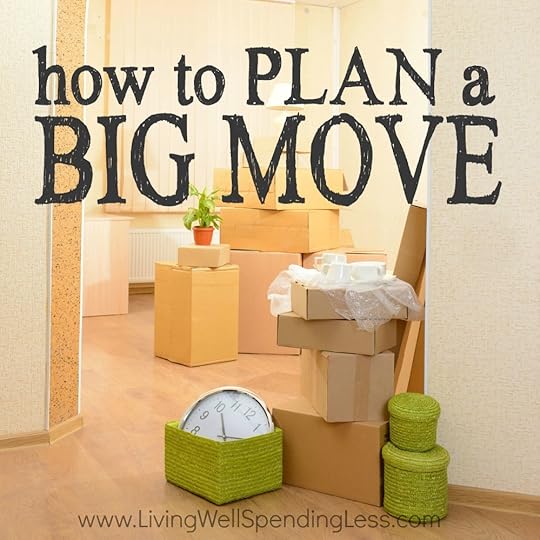
Ugh….moving.
Few things inspire more dread, stress, and sheer panic than the prospect of planning and executing a big move, especially one to a new city or state.
Believe me, I know. Since we’ve been together, my husband and I have moved cross-country four times, sharing more than a dozen different addresses, and are now preparing for our fifth big move. And so, I think I can safely say that we have learned a thing or two about how to pack, organize and prepare for the trip, physically, mentally and emotionally. We’ve also amassed quite a list of things to avoid.
Moving is always fraught with adventure, excitement, stress and expectations. After all, it’s a new beginning, which entails tackling many unknowns and embarking on new experiences. A new home can be symbolic for everything the future can and will hold for you and your family!
My biggest piece of advice is to simply embrace the journey as an exciting new adventure. I can can guarantee that not everything will go smoothly, but you will most certainly create a lot of memories. The truth is that everyone remembers a move, from our first apartments to our temporary digs to our forever homes, because each one holds a little piece of our hears.
Here are a few things you can do to help make the experience a little easier.

Before Your Move
The best way to ensure a smooth move is to be organized beforehand. Hopefully you’ve been ruthlessly purging and decluttering your home for some time now. If not, then there’s no time like the present to get “Unstuffed”—particularly when a move is on the horizon!
Purge & Clean
When you have the option to store items, it can seem easier to hold on to them. But when you have to make the “to move or not to move” choice, things become cut and dried. If you don’t love it, need it, use it regularly, or if it’s broken, get rid of it! Obey this rule for everything you touch: clothing, books, magazines, toys, knickknacks and even kitchen appliances. Embrace the “when in doubt, throw it out” mentality. There’s nothing worse than unpacking boxes of stuff later on, only to realize you don’t really need any of it.
Sell your stuff on Craigslist or even eBay to get some return on your investment. Post any furniture or large items to your local community Facebook page or to your neighborhood swap board. Couches, appliances and other items can fetch a decent price and may really help offset the cost of some of your move.

Measure & Arrange
Ensure you have a floorplan for your new home so you can arrange your family’s living space in advance. Measure your furniture to ensure everything you want to keep fits and has a place in your new home. Some people only measure the largest pieces, while some measure everything. It’s really up to you and how much you like to plan and play with layouts.
Download an app like MagicPlan or Homestyler so you can arrange your layout before you get into your house. This will also help you decide where each piece of furniture should go and where it will fit.
Collect Boxes
Is your move fast approaching? Start collecting boxes as soon as possible. If your budget is tight, heck Craigslist and Freecycle to find people who’ve recently moved and are looking to get rid of their collection of packing supplies (and make a mental note to return the favor post-move). If you’ve got some wiggle room, consider purchasing boxes. U-Haul offers moving boxes for a very reasonable price, and they also buy back any boxes you don’t use.
Check with liquor stores and grocery stores for boxes. Have your office save paper boxes for you and hold on to any boxes that come into your home. Flatten the boxes and store them in a dry location until you’re ready to start packing. You can begin packing up to eight weeks ahead. Assess whether your holiday decorations, camping supplies, and seasonal items are already packed up to go.
Several handy services offer plastic bin rentals, including ZippGo and Rent-A-Green Box. These services can be really helpful. They save you time and the frustration of dealing with collapsed cardboard boxes; plus, they’ll inspire you to unpack quickly because you have to return the bins.
As you’re collecting boxes, try to aim for consistent sizes, if at all possible. They’ll be easier to stack and arrange. You’ll also want to collect bubble wrap, packing tape, and large sheets of paper and plastic bags to pack around breakable items. Get creative with the way you pack: blankets can cushion fragile items and food containers and cardboard can protect breakables.
Set a Date
Schedule your official move date. Coordinate which day based on your closing date (if you’re buying a house) or the end of your lease on your current place. Try your hardest not to break your lease. If you must, sublet if you’re in the middle of an agreement. Breaking your lease can cause a great deal of additional expenses, like having to pay rent on a place where you no longer live.
Schedule your move during the week if you can, and keep in mind the first and last of the month are peak moving times. June and September are also busy times with graduation and back-to-school. Movers are swamped and the rates are sky high. If you can go off-peak, you’ll definitely save money.

Decide on Movers
Back in our college years, many of us could rally friends to move our stuff for a six-pack of beer and a pizza. Unfortunately, as adults, it’s asking a lot to expect family and friends to move you out or in. I’ve watched my husband struggle to help friends move, and it’s a big favor to ask of anyone.
Even if you think you can move items yourself, consider the pros of using a professional mover: they’re experienced, they’re usually bonded and insured, and they can alleviate a great deal of stress while saving you time. When your washer doesn’t fit down the stairs, movers will understand how to angle it or position it so it will fit (or they’ll be able to definitively tell you it won’t). You aren’t left playing a dangerous game of Tetris as you throw out your back.
A word to the wise: moving costs between companies can vary greatly depending on a variety of factors—and cheap isn’t always best. Our family friend moved cross-country a few years ago. She went with the cheaper movers and ended up with a lot of damaged furniture. (Some was even damaged from the straps holding it in place.) Some movers apply muscle to fit everything into the truck and some apply finesse. Do your homework on your moving company and evaluate whether it’s really worth it!
There are a bunch of ways to offset the cost of hiring professional movers. First, do your research and find the best deal on a moving company. Check the Better Business Bureau and visit http://www.protectyourmove.gov to get a handle on your rights and the protections available. Check with your homeowner’s insurance to be certain your movers are covered. If you hire local students off Craigslist or Facebook, they might not be covered and you could be out more than it’s worth.
Second, consider what you can DIY. Oftentimes, you can save by doing your own packing (but your movers might have restrictions on what they’ll insure based on who packed it, so always check). You might also be able to drive the truck yourself, then simply hire movers to pack and unpack for you. (Chances are, you’ll probably find more helpful friends and neighbors in your current town than strangers willing to help you in your new town.) If you’re moving locally, you may be able to take a few smaller loads in your own car, reducing your transportation and shipping costs. If you’re moving a few states away and your moving company will be taking one of your cars along with the van or truck, be sure it’s in a trailer, rather than driven to your new home. I’ve heard too many horror stories of cars arriving with serious damages, or worse, lost along the way only to arrive weeks (or even months) later!
Additionally, many employers will offer a bonus or incentive to offset moving costs, so if you have to relocate to take a new job, always bring that up in negotiations.
All in all, I’m a big fan of DIY in almost all cases, but when it comes to moving, hiring movers is the way to go. You’ll preserve your health, your back, your friendships and your sanity. If there’s a place to splurge on your moving costs, movers are it.
This is also a good time to determine if you’ll need a cleaning service to take care of your old home after you’ve moved out. Depending upon your arrangement with your landlord or realtor, you may need certain areas professionally cleaned. If you’ll be doing all the cleaning yourself, be sure you leave time (and energy) to do so after the movers have everything out.

Change Your Address
About a month before your move, you’re going to want to start the process of changing your address on bills, credit cards, subscriptions, correspondence, etc. Fill out a change of address form with USPS and you’ll get a moving packet filled with hundreds of dollars in coupons, plus ideas on ways to save on your move. Send out a moving announcement to friends and family with your new address and information.
Check with all utility companies and inform them of your move. Schedule services like phone, cable, electricity and water ahead of time so you aren’t left in the dark. If you have a gas stove or dryer, you may need to have it turned on by a professional, as with the furnace. Plan ahead to ensure your utilities are ready to go.
If your pets are chipped, be sure to change your contact information and address on the chip. This is as simple as calling the manufacturer and updating your information. If you’re not sure of the manufacturer, contact your veterinarian or look up the microchip ID on the American Animal Hospital Association website.
Get Set Up in Your New Town
Contact the City Hall, Visitor’s Bureau and local Chamber of Commerce in your new town to find ideas of things to do and explore local culture and businesses. (Definitely find the closest grocery store!) If applicable, familiarize yourself with your new local DMV so you can get your new IDs and driver’s licenses taken care of sooner rather than later.
If you’re moving to a new state, ask if there are any restrictions on what you can move into your new home. For example, some states have plant protection laws and regulations—meaning you may not be able to move all your houseplants or you may have to comply with regulations. Look up your state’s details by visiting the National Plant Board. (Also, if you’re moving really far, consider that your plants may be trapped in a hot truck for days on end.)
Be sure to set up a new bank account (if need be) and order new checks if you like. (Be sure to prep to move the contents any safety deposit boxes as well.) Scope out new doctors and remember to ask your current doctor for the information they’ll need to transfer your family’s medical records. Likewise, visit your kids’ school and arrange to have their transcripts and records transferred. Check out your new school district online and consider corresponding or arranging to meet with your child’s teachers before they enroll at their new school. If you have pets, be sure you find a good vet and transfer your pet’s records as well.
These little pre-planning activities can help you feel more at home when you arrive at your destination. There’s nothing worse than having a panic attack at the grocery store because they won’t take your check or trying to find a new doctor for a sick child in the middle of the night. Be prepared to make your move a welcoming and positive experience.

Moving
Moving is more than simply packing boxes and throwing things on a truck. If you’re organized and careful, you can save yourself a huge headache down the road.
Pack your necessities in a suitcase (toiletries, clothing, bath towels, washcloths) and plan as though you’ll need to live out of a trunk for a few weeks. Be sure you have all medications filled and on hand, and plan for anything you might need to access quickly. Back up all your digital data and your computers. Be sure you have chargers for phones and electronic devices ready and handy.
I usually set aside a few boxes labeled “MOVING DAY” packed with everything we’ll need when we get to the new house. You’ll want to pack these boxes with cleaning supplies, rags and paper towels, a small toolkit, paper plates and utensils, dishcloths, towels, and anything else your family may need at-the-ready when you arrive (especially if you plan on arriving ahead of the truck).
As you pack, each box should be full but not cramped and any weight should be held evenly. Don’t forget that while the movers may be physically moving the boxes from your old home to your new home, you’re still going to have to lug them around a bit when you’re unpacking! Be sure they’re not too heavy for you or your family to handle. If you have a family of bookworms, be sure to place books in the bottoms of multiple boxes to offset their weight.
As you complete and tape them shut, number and color-code every box according to the room they will go in. Label everything in two places (on the top and on the side) to ensure you have a handle on the contents. Wipe down anything dusty or dirty. (There’s no sense bringing extra dirt with you.) Take photos of the contents of each box as a reminder for where you put items and to document the condition of everything inside each box.
Likewise, as you’re packing, note any damage to furniture and appliances. (You don’t want to argue with a moving company whether a table had three legs or four to begin with!)
When it comes to the kitchen, compare your old kitchen layout to the kitchen in your new home. It’s likely it will be easiest to move your kitchen cabinet by cabinet. For example, if you currently keep your spices, measuring cups and spoons, and potholders in one drawer, pack them all together. You can always reorganize later. This way, when you get to your new kitchen, you’ll instinctually know which items are grouped together. You’ll be able to find everything much more quickly and you’ll feel more comfortable and at ease.
Plan on defrosting your refrigerator at least 24 hours in advance of moving day if you’re taking it with you. Try to eat any food and donate your pantry items rather than moving them. Avoid grocery shopping at least a few weeks before you go and use up those freezer meals! It’s usually not worth the hassle to have to worry about keeping food cold and safe during a big move.
When it comes to valuables, paperwork and vitally important or expensive items, consider transporting them with you in the car or shipping them to your new home fully insured and tracked. It’s just too dangerous to put these critical items on a moving truck and risk the loss, but also keep in mind that storing them in your car can be dangerous if you’re driving and staying overnight in a hotel. Always keep a list and inventory of every single thing you pack, whether it goes with you or on the truck.
Packing the Truck
Pack the van with the heaviest stuff first. Put large items and big bulky items like couches on the very bottom. Stack heavy boxes on the remaining bottom, then fill in with light boxes and items like pillows, blankets, and accessories. Pack your mattress at the end of the truck to catch any items and pad them if contents move during the journey.
When planning for movers, you can make the process go more smoothly by keeping the largest items closest to the door and the smaller boxes piled together to fill in afterwards. Keep in mind that items will go in the opposite way they come out, so don’t plan on unpacking those books until the bookshelf comes off the truck.
Try an app like Moving Van to keep track of box contents and the order they go in and come out, as well as where they should go. Hopefully you’ve cleaned out as much as possible by this time. Organizing your move in advance really helps everything run smoothly and efficiently.
On moving day, make things as easy as possible for yourself by hiring a babysitter and pet-sitter to keep little ones out from underfoot. Take at least a few days off of work (more if you’re moving across the country). Arrange to eat simple foods: have sandwiches, soda, water bottles and granola bars on hand, so you can grab and go. Be sure to have cash on hand for the movers, your keys, extra paper towels, and any other vital supplies you might need for the day.

Moving Into Your New Home
If you can get to your new place ahead of the moving van (especially if you’re moving cross-country), go for it. Make it a fun “camp out” adventure for the whole family. Bring your suitcase and cleaning supplies so you can put some extra work into the bathrooms and the kitchen, if need be.
Hang signs on each doorframe indicating the name and the color of that room to avoid confusion when the movers arrive. You can also write a list or put down labeled pieces of paper to signify placement of where each piece of furniture should go. It can also help to instruct the movers to place your boxes in each room’s corners, away from the furniture, so you have more room to work with.
Trust me, it really helps to get a head start!
If you don’t have a chance to get to your new home before the moving truck, be sure the movers know exactly where each piece of furniture and each color-coded box is supposed to go in your new home. Provide your moving company with a floorplan and/or a list of corresponding color-coded rooms. Remember: it’s not the movers’ job to “design” your home, but they’ll certainly thank you when they don’t have to move your grandmother’s credenza up and down the stairs, twice.
If there’s more than one team of movers present on moving day, have one team unload boxes and the other team focus on furniture so you can better direct the furniture placement (especially if you’re the only adult present on moving day). The moving company will likely set up beds, bookshelves and other furniture. Check to ensure all major appliances (washers, dryers, stoves, refrigerators) are hooked up as well. I recommend verifying these services are included in your contract—it’s SO much easier to start your life in your new home when everything is set up and ready to go.
Once the movers pull out and you’re left surrounded by an enormous pile of boxes, you’re probably going to feel pretty darned overwhelmed. You got this! The first step is to sort the boxes into the correct rooms, using your color-coding system. Hopefully your movers have followed the plans you’ve laid out and things are mostly in the right spot.
Start by unpacking the bedding and making your beds. When you have a place to sleep all set up, you’ll instantly feel more at home. Play some music, and get some lamps set up or open the blinds to let the light in to make things feel a little more homey. After that, tackle the bathrooms. If your new home is dusty or dirty, be sure to wipe down mirrors and countertops and clean out shelves and drawers before you move each item into its new location.
Hopefully you’ve packed enough clothes in your suitcase for the next day or two and you have some easy snacks on hand. Knowing where your food, clothing and necessities are will help you feel more settled and oriented. If that’s as far as you get that first day, that’s perfectly okay! You’re probably exhausted. Enjoy some takeout (be sure to grab plastic forks) or pizza your first night and settle in!
When you start to unpack the rest of your house, do it systematically. If you need to clean the kitchen or any built-in shelving before unpacking, do that first (but save the floors for the end or you’ll just end up redoing them). I prefer to start with the kitchen—it’s a focal point for the whole home, so getting it set up right away fills the new space with feelings of family and warmth. Next, I usually move on to the clothes closets.
Get boxes out of the way by taking decorations and seasonal items to their storage location (attic, basement or garage) right away, especially if they don’t require unpacking. Arrange furniture first to be sure items like books can be easily unpacked and stored in their proper home.
Set an unpacking goal each day and try to tackle one or two rooms at a time. Get the whole family involved! Even little ones can help empty boxes, put away their clothes and shoes, arrange their toys and books, and more. When your kids get involved in unpacking and organizing their own rooms and play areas, it can really help them acclimate to their new space.
Keep cleaning supplies at the ready and clean as you go. Be sure you have a hammer, nails, and other supplies on hand so you can hang pictures and really settle in.
Embarking on your big move can feel overwhelming at first, but with a little pre-planning and organization it can be an exciting adventure. If everything doesn’t go exactly as planned, try to remind yourself that it’s ok to go with the flow. Take photos and keep track of the new discoveries you make as a family! It’s a lot of work, but moving can be fun, I promise. Happy moving!

Pin It
The post How to Plan a Big Move appeared first on Living Well Spending Less®.
June 3, 2016
10 Ways to Save on Appliances

Appliances are one of those things we tend to completely take for granted….until, of course the refrigerator suddenly conks out, or the washing machine stops working and we all of the sudden remember how much we rely on these modern conveniences of ours.
The problem, of course, with relying on them so much, is that when we unexpectedly find ourselves looking for a replacement, we are often in desperate need and not always able to shop around, wait for a sale, or do our research the way we should.
That’s why it always helps to be prepared. If you’re faced with a tight budget and a major appliance purchase (or may be in the future), here are a few smart strategies to help you get the most for your money.

Buy ENERGY STAR and High Efficiency Appliances
The Environmental Protection Agency (EPA) created the ENERGY STAR program as part of the Clean Air Act of 1992. This rating system is a way for manufacturers to show consumers that their products are energy efficient, and have been tested by a third party.
This energy efficiency certification ensures the consumer is getting a product that performs above industry standard energy usage—so over the long haul you’ll save big-time money on your energy bills.
If you have a fridge or other large appliance that’s older or not ENERGY STAR certified, it can cost you hundreds of dollars per year on your electricity bill. (See how much you can save with this great Refrigerator Retirement Savings Calculator.) Even though the initial cost for ENERGY STAR certified products might be a little higher, the long term savings far outweigh the cost difference. For example, buying a high efficiency washer may be a little more expensive than a standard machine, plus HE laundry soap costs slightly more, but you use so much less of it in each wash that the savings really add up!

Hold Out for Sales
Most large appliances go on sale in the fall in September and October, right before Thanksgiving. Manufacturers often unveil their new year models before Christmas shopping (though hopefully most husbands hopefully know that an iron, vacuum, or dishwasher on Christmas morning isn’t the way to your wife’s heart).
Refrigerators are the exception to this timeline and typically go on sale in May, as new models are usually released during the summer months. If you suspect an item is starting to go on the fritz, try to make it work a little longer and hold out for the sale months.
Often, like cars, new appliance models are very similar to the previous year’s model. So waiting for sales on slightly older models means you’re often only forgoing a few minor or cosmetic changes for big savings. If you suspect your current appliance can last until the next sale season with a little duct tape or a minor fix, the extra cash in your pocket will make the wait worth your while.
Bypass the Bells and Whistles
When shopping for appliances (from microwaves to sewing machines to coffeemakers), beware of the “extras” that you probably don’t need. Every seamstress fancies the pretty embroidery and digital patterns that a new sewing machine can offer, but if you’re a less technical sewer, you can get by with the basics.
The same goes for things like automatic timers on the coffee machine or special cycles on a washer. They can be a great convenience if you know how to use them, but they aren’t necessary. I’m betting if you went through your appliances right now and took stock, you’d find at least five or six items that you rarely (if ever) use to their full capacity on “special settings.”
Unless you have specific technical applications in mind for your appliance or if you (or your husband) love to read manuals and explore all the inner workings of every machine, it’s best to keep it simple. Buy the most user-friendly and basic version of what you need to avoid complications down the road.

Consider What You Need—Bigger Isn’t Always Better
Sticking with your “keep it simple” mindset, always consider the size of any appliance before buying. Fridges come in a variety of sizes all the way up to 30 cubic feet! Now really, does your family need all that fridge space? A family of four can get by with just 10-12 cubic feet of refrigerator space, according to Better Homes and Gardens.
Choosing a size that better suits the needs of your family will ensure you’re not spending excessively on the cost of energy to run the appliance. It will also reduce the temptation to buy, store, and waste more produce and refrigerated food than you can reasonably use.
A friend of mine was breastfeeding while working and had to freeze supplies of milk for later. She found that once her toddler had been weaned, they simply didn’t use the large chest freezer in their basement as much as they used to. She was able to downsize to a smaller freezer, trading with a neighbor who was more than happy to upgrade to something larger to accommodate her sportsman husband’s venison and trout.
Trade, Swap and Look for Used Appliances
The freezer story segues into my next point—trade, swap and ask around before you buy. There are many gently used appliances out there. Neighbors and friends are always moving, sending children off to college, or finding a need to up or downgrade various household appliances before they’ve run their course.
Check flea markets, yard sales, and Craigslist for items before you buy. Estate sales are also a great resource for gently used appliances. Ask your friends and neighbors and post requests on social media. You may be doing someone else a favor by taking an item off his or her hands.

Do Your Research
If you buy a new appliance, always, always do your research beforehand. If you’re making a big purchase, a Consumer Reports subscription might be a worthy investment. Items like humidifiers, small heaters, and kitchen appliances often have many online reviews. I’ve been deterred or steered in the right direction by many an Amazon review. (Haven’t we all?) Following customer feedback can help ensure you don’t shell out a bunch of money for a lemon.
If you have a friend who’s happy with her breadmaker, or makes the best smoothies, or grills up perfect steaks, ask her about that appliance brand! Often word-of-mouth and hands-on experience can be invaluable to guiding you towards the best purchase.
Buy Reliable Brands
If you have to make a decision on the fly or you’re torn between two items, always go with the tried and true brand. While you may pay more for Samsung or Sony, you know they’re a larger company, so they’ll be there tomorrow if something goes awry.
Store brands and knockoffs can be great money savers when in the grocery store or when shopping for personal care items. But when it comes to appliances, I’ve found you usually get what you pay for. It’s wonderful to support small companies and help new businesses grow, but when you’re spending $200 or more for a new vacuum cleaner, go for the brand you’re familiar with.

Save Money on Delivery and “Extras”
When you go to a store, walk in with your negotiating hat on. Before you even start listening to the sales pitch and the comparison points, let the salesperson know you’re hoping to purchase the appliance without paying shipping costs or delivery fees. Tell them what you’re willing to spend and that you can’t spend a dollar more—then stick to your guns.
Delivery, commission, and other costs that seem to pop up after your purchase can really add hundreds to a final price. I can’t tell you the number of times I’ve seen someone go into a store expecting to pay $500, then walk out with a bill for nearly $1000. Hold to your bottom line and be aware that most stores have some flexibility when it comes to these “extra” costs.
Research what warranties are offered by the manufacturer before you get to the store. Often these warranties sufficiently cover major defects and problems, so by reviewing the coverage beforehand, you can confidently decline the “extra coverage” offered by the store.
Ask About Scratch and Dent or Floor Models
When you go to the store, always inquire about floor models, seconds and scratch-and-dents. Now, we all love to have beautiful new appliances and I know how hard it can be to think of buying something with a cosmetic flaw. However, you can save hundreds of dollars on items that can be repaired or simply positioned in your home in such a way that the flaws are covered or hidden.
Additionally, I always ask about floor models when I’m at the store. Some stores will still honor the warranties on floor model items and buying an item that’s been gently used or modeled for a short time can significantly cut costs.

Care for the Items You Have—Can It Be Repaired?
One way to really save on your appliances is to keep up on preventative maintenance. Taking the time to properly dust the coils on the back of your fridge, descale the humidifier, or change air purifier filters ensures your appliance purchases will have a long and healthy life.
I know people who have actually thrown out microwaves, small fridges and other items because they were just too dirty to deal with. This is especially common when it comes to small appliances, vacuum cleaners, and frequently used items that may just seem worn. Often a little wipe down and some maintenance or preventative care is all you need to keep them in clean, working order.
There’s a reason those old Hoovers used to work for so long without quitting. It wasn’t just because “they made them better back then,” it was because grandma took excellent care of her appliances and valued them more than we tend to do today, in our disposable everyday life. We should put aside the “easy come, easy go” mentality and try to get as much life out of our appliances as we can. Repairs are often much less costly than total overhauls and they’re definitely less wasteful.

The post 10 Ways to Save on Appliances appeared first on Living Well Spending Less®.
June 1, 2016
Easy Spinach & Feta Turkey Burgers

Burgers are one of our spring and summertime staples, but I have to admit that we usually opt for the pre-made burgers rather than take the time to make our own. Yes, I know they are more expensive, but in this case, convenience almost always wins out over cost.
Not anymore!
Not only are these flavor-packed spinach & feta turkey burgers WAY tastier than any of the pre-made varieties, they are a snap to make! We whipped up 10 patties in just a few minutes (at a fraction of the cost of the pre made burgers!) To make these as part of a freezer cooking day, simply individually wrap the raw burgers in plastic wrap or parchment paper, and then into a ziploc freezer bag–no pre-cooking required! Making it ahead of time is not necessary, though, as they are equally delicious thrown straight on the grill!

Here is what you need:
2lbs. package ground turkey (or chicken) meat
4 ounces feta crumbles
3 cloves garlic, minced
9 oz bag fresh spinach
1 large egg
3 tablespoons butter
1 1/2 cups seasoned breadcrumb
hamburger buns (for cooking day only!)
lettuce, tomato, onion, ketchup, mayo, etc. (optional; for cooking day only!)

Step 1: Mince garlic, then melt butter in saucepan and saute spinach with garlic, until spinach is wilted and set aside to cool. Drain any liquid if necessary.

Step 2: In large bowl, mix together ground turkey, feta, egg, spinach mixture, and breadcrumb until well blended.

Step 3: Form turkey mixture into 10 patties place on parchment paper covered cookie sheet. Flash freeze for 20 minutes.

Step 4: Wrap each patty individually with parchment paper or saran wrap. Divide patties into two gallon size freezer bags (be sure to label bags first!) Freeze until needed.

Step 5: To cook, grill frozen patties for 7-9 minutes per side until done.

Step 6: Serve on Hamburger buns with lettuce, tomato, onion, or any other favorite burger fixings!
Print This!
Recipe: Easy Freezer Spinach & Feta Turkey Burgers
Summary: These burgers are jam-packed with flavor & ready when you are!
Ingredients
2lbs. package ground turkey or chicken meat
4 ounces feta crumbles
3 cloves garlic, minced
9 oz bag fresh spinach
1 large egg
3 tablespoons butter
1 1/2 cups seasoned breadcrumb
Following items for cooking day only:
hamburger buns
lettuce, tomato, onion, ketchup, mayo, etc. (optional)
Instructions
Mince garlic, then melt butter in saucepan and saute spinach with garlic, until spinach is wilted and set aside to cool.Drain any liquid if necessary.
In large bowl, mix together ground turkey, feta, egg, spinach mixture, and breadcrumb until well blended.
Form turkey mixture into 10 patties place on parchment paper covered cookie sheet. Flash freeze for 20 minutes.
Wrap each patty individually with parchment paper or saran wrap. Divide patties into two gallon size freezer bags (be sure to label bags first!) Freeze until needed.
To cook, grill frozen patties for 7-9 minutes per side until done.
Serve on Hamburger buns with lettuce, tomato, onion, or any other favorite burger fixings!
Preparation time: 5-7 minutes
Cooking time: Grill frozen patties for 7-9 minutes per side until done.
Number of servings (yield): 10

Pin It
The post Easy Spinach & Feta Turkey Burgers appeared first on Living Well Spending Less®.
Don’t Miss the Ultimate Homemaking Bundle Flash Sale (2 Days Only!)
Once a year, for just a few days only, there is a resource for us overstressed, overworked mamas & homemakers that is SO amazing, I can’t NOT tell you about it. In fact, it is a resource SO good that it is actually the only outside product that I promote all year long!
Because here’s the thing that most of us have figured out by now–homemaking is hard work! Between the cleaning, the cooking, the meal-planning, the child-rearing, and all the other things on our plate, it sometimes feels like there is just too much to do an not enough time to get it all done!
If you’re anything like me, I bet you wish your home felt more put together and peaceful, you kept up with housework better, you were more consistent about serving healthy, homemade meals and you weren’t running ragged so much of the time.
Because these families of ours? They matter more than anything else. Our job is so important, and we really want to do it right. But so often, we end up feeling discouraged and even like we’re failing.
Maybe you wonder how you can keep up with it all and still have the energy and intentionality to be the kind of mom, wife and woman you want to be.
Now, I know as well as you do that homemaking is never going to be stress-free (though it sure sounds nice). But what if you had more (and better) tools to help make it stress-less?
Say hello to the Ultimate Homemaking Bundle
It was created to give you a plethora of amazing, high-quality resources to take some of the stress, overwhelm and difficulty out of homemaking and mothering.
To make you feel like you’re winning more often.
And to bolster you in the work you’re doing, because every awesome, hard-working mom deserves a little help sometimes.
What’s IN the Ultimate Homemaking Bundle?
The Ultimate Homemaking Bundle includes 93 hand-picked eBooks, eCourses, and printables, on topics that matter to moms such as:
organization, routines & creating a cozy home
recipes, grocery shopping and meal planning
budgeting and saving money
motherhood (no matter what age your kids are)
cultivating a strong marriage
faith (for you & your kids)
and even self-care (like exercise, weight loss, life planning and coloring books!)
and much more…
You have a full year to download the eBooks and printables and take the online eCourses, and everything you’ve downloaded becomes part of your permanent library, so you can go back to it whenever you need it.
Is the Ultimate Homemaking Bundle worth it?
In a word… yes!
The creators of the Ultimate Homemaking Bundle work all year long to make sure they are putting together the very best homemaking resource anywhere.They dig through hundreds of websites and connect with dozens of authors and teachers (including me!) And then we all work together to make these resources the most affordable possible.
Now I know what you are thinking, because I thought the same thing: “Sure, it sounds like a great deal, but what on earth would I do with that many books all at once? I would be overwhelmed just by the thought of reading them all!”
In fact, it is that exact thought that has held me back in the past from purchasing a previous bundle. But that was before I found out that you are allowed to gift the books you don’t plan to read! Say what? It’s a game changer! Now I can focus on the books that really interest me, and share with friends and family the books that I know I probably won’t get to. Talk about a win-win!
And after taking a peek at what this particular bundle has to offer, I can tell you that there are several books that I am super interested in. These few alone make the bundle well worth the price. Check it out:
 Upstream Field Guide by Tsh Oxenreider at The Art of Simple ($59). The 8-lesson Upstream Field Guide eCourse will help you discover who you deep-down really are, hone in on your purpose, and create a life that makes more sense.
Upstream Field Guide by Tsh Oxenreider at The Art of Simple ($59). The 8-lesson Upstream Field Guide eCourse will help you discover who you deep-down really are, hone in on your purpose, and create a life that makes more sense.
 Family Budget Challenge by Shannon Brown at Growing Slower ($37). Finally–a course that will teach you how to make a budget and stick to it at last! Take the Family Budget Challenge to see lasting changes in your financial life.
Family Budget Challenge by Shannon Brown at Growing Slower ($37). Finally–a course that will teach you how to make a budget and stick to it at last! Take the Family Budget Challenge to see lasting changes in your financial life.
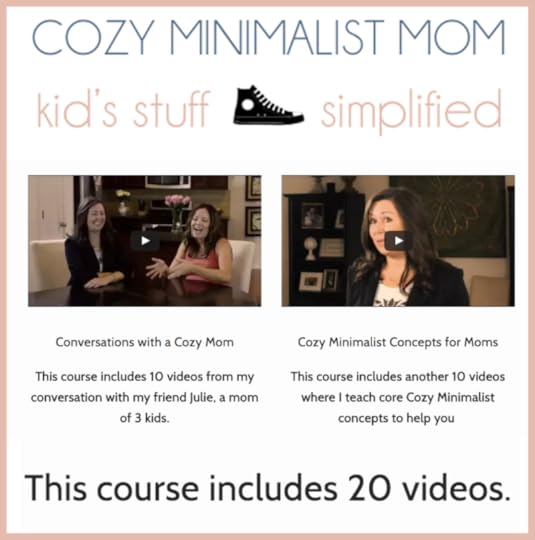 Cozy Minimalist Mom by Myquillyn Smith at Nesting Place ($29). In this life-changing eCourse, the Nester shares her 10 simple concepts for creating a Cozy Minimalist home–even with kids! This one is a total game changer!
Cozy Minimalist Mom by Myquillyn Smith at Nesting Place ($29). In this life-changing eCourse, the Nester shares her 10 simple concepts for creating a Cozy Minimalist home–even with kids! This one is a total game changer!
 Jumpstart Your Creativity by Jennie Moraitis at Little Girl Designs ($24.98). The seven-day Jumpstart Your Creativity eCourse will help you reassess, gather insight, and make a plan for making creativity a priority all year round.
Jumpstart Your Creativity by Jennie Moraitis at Little Girl Designs ($24.98). The seven-day Jumpstart Your Creativity eCourse will help you reassess, gather insight, and make a plan for making creativity a priority all year round.
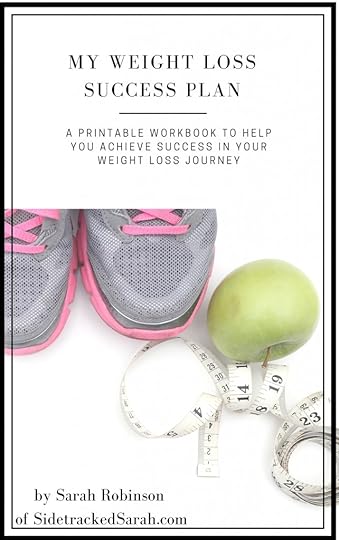 My Weight Loss Success Plan by Sarah Robinson at Sidetracked Sarah ($17). The Printable My Weight Loss Success Plan helps you create and keep a plan to succeed at your fingertips, as well as provides motivational cards for your journey.
My Weight Loss Success Plan by Sarah Robinson at Sidetracked Sarah ($17). The Printable My Weight Loss Success Plan helps you create and keep a plan to succeed at your fingertips, as well as provides motivational cards for your journey.
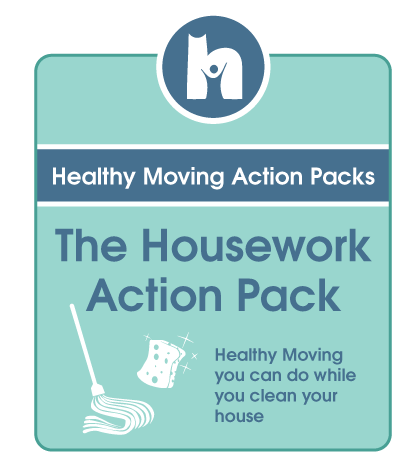 The Housework Action Pack by Jennifer Hoffman at Healthy Moving ($19.97). Discover healthy moving you can do while you clean your house. Take care of your body and your home all at the same time, and have fun doing it!
The Housework Action Pack by Jennifer Hoffman at Healthy Moving ($19.97). Discover healthy moving you can do while you clean your house. Take care of your body and your home all at the same time, and have fun doing it!
 80 Green Thickies Recipes by Katherine Kyle at Green Thickies ($29). Get 80 green smoothie recipes and discover fully balanced meal replacement shakes that skyrocket your health and effortlessly fit into your crazy life.
80 Green Thickies Recipes by Katherine Kyle at Green Thickies ($29). Get 80 green smoothie recipes and discover fully balanced meal replacement shakes that skyrocket your health and effortlessly fit into your crazy life.
 Make Over Your Calendar by Crystal Paine at Money Saving Mom ($10). Crystal is one of the most productive people I know, and her simple Makeover Your Calendar eCourse might be just the tool you need to take control of your schedule for good!
Make Over Your Calendar by Crystal Paine at Money Saving Mom ($10). Crystal is one of the most productive people I know, and her simple Makeover Your Calendar eCourse might be just the tool you need to take control of your schedule for good!
 Slow Cooker Freezer Meals Vol. 1 & 2 by Tiffany King at Eat At Home ($19.97). Slow Cooker Freezer Meals Volume 1 includes 12 meal plans, each with 6 dinner and side dish suggestions, plus color coded grocery lists, assembly instructions, and tips. Volume 2 includes 12 MORE meal plans, along with grocery lists, assembly instructions, and tips.
Slow Cooker Freezer Meals Vol. 1 & 2 by Tiffany King at Eat At Home ($19.97). Slow Cooker Freezer Meals Volume 1 includes 12 meal plans, each with 6 dinner and side dish suggestions, plus color coded grocery lists, assembly instructions, and tips. Volume 2 includes 12 MORE meal plans, along with grocery lists, assembly instructions, and tips.
 Your Retreat: A Guide to Giving Yourself a Personal Planning Day by Erin Odom at The Humbled Homemaker ($3.99). In Your Retreat, Erin offers encouragement, motivation, and a complete how-to on creating your own personal planning retreat, plus 35 printables to guide you through your own retreat.
Your Retreat: A Guide to Giving Yourself a Personal Planning Day by Erin Odom at The Humbled Homemaker ($3.99). In Your Retreat, Erin offers encouragement, motivation, and a complete how-to on creating your own personal planning retreat, plus 35 printables to guide you through your own retreat.
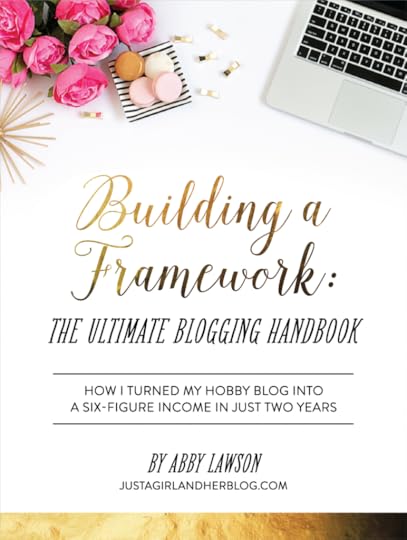 Building a Framework: The Ultimate Blogging Handbook by Abby Lawson at Just a Girl and Her Blog ($25). Have a blog or want to start one? Take the guesswork out of growing your blog with this Ultimate Blogging Handbook.
Building a Framework: The Ultimate Blogging Handbook by Abby Lawson at Just a Girl and Her Blog ($25). Have a blog or want to start one? Take the guesswork out of growing your blog with this Ultimate Blogging Handbook.
 The “Get Your Life Back” Organizational Bundle by Whitney Cornelison at Beauty in the Mess ($4.99). This life-saving bundle includes 10 colorful printables to help you organize your days, weeks, and months.
The “Get Your Life Back” Organizational Bundle by Whitney Cornelison at Beauty in the Mess ($4.99). This life-saving bundle includes 10 colorful printables to help you organize your days, weeks, and months.
All this and MORE…
The result? This collection is a fraction of the price of what someone would pay for each resource individually!
For a short time, the Ultimate Homemaking Bundle… a complete library of:
70 eBooks
9 eCourses & audio downloads and
14 printable packs
…93 carefully selected resources designed to help you nurture the beauty and productivity in your home and family relationships… is only $29.97.
That breaks down to 32 cents per resource.
Your 30-Day 100% Satisfaction Guarantee
If for any reason, you decide that the Ultimate Homemaking Bundle is not for you, then please send an email to customerservice@Ultimate-Bundles.com and we will refund 100% of your investment. No questions asked.
Don’t Forget the Bonuses…
Of course, no Ultimate Homemaking Bundle would be complete without the generous, inspiring gifts donated by companies that understand homemakers like you. Every gift is yours to keep and enjoy.
FREE Mrs. Meyer’s Dish Soap, Mrs. Meyer’s Multi Surface Spray, Grove Collaborative Spray Bottle, Grove Collaborative Scrubber Sponges and FREE 60-day VIP trial with FREE shipping from Grove Collaborative ($30 value)
FREE Online Class from Craftsy ($29.99-$69.99 value)
$15 Credit to Hope Ink Shop PLUS Two FREE 8×10 Art Prints with Any Purchase ($71)
FREE SPOT Treatment for Acne & Eczema OR a $15 Gift Certificate from Bloom Naturals ($15 value)
FREE 90-Day Pro Membership to ListPlanIt.com ($30)
FREE 1-Year MollyGreen.com Membership ($29 value)
Now It’s Your Turn
The proven, simple, and effective skills you need to transform your house into a home are all waiting for you in the Ultimate Homemaking Bundle.
This is your chance to get all the love, support, guidance and inspiration you need to nurture the beauty and productivity in your home and family relationships with proven, simple, and effective tools that really give you a boost as a homemaker.
But here’s the catch (and it’s a big one!)–the UHB is available for just TWO days – from now until Thursday, June 2nd, 2016 at 11:59pm EST. That’s why the Ultimate Bundles team can offer so much, because they only have permission to sell it for such a short period of time. (So don’t wait or you will miss out!)
The total value is an astonishing $1000 (plus over $300 in bonuses), but you get it for just $29.97. That’s 97% off what it would cost to buy everything individually!
Get your bundle now!

If you think getting all those homemaking helps for less than $30 sounds like a steal, then make sure to go HERE to see exactly what it includes and grab yours before this deal ends!
Read the fine print about this bundle and read the answers to frequently asked questions about the bundle.
Pin It
The post Don’t Miss the Ultimate Homemaking Bundle Flash Sale (2 Days Only!) appeared first on Living Well Spending Less®.

